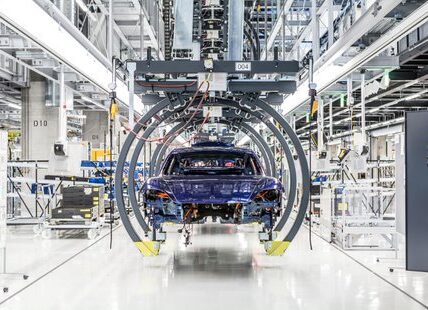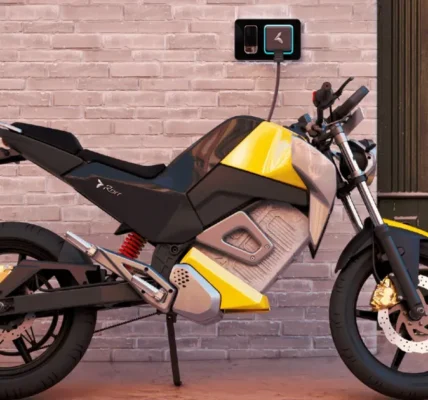In recent years, Electric Vehicles (EVs) have proven to be a key solution to address pollution and carbon footprint issues in the country with its burgeoning population and rapid urbanisation. However, a total of 21.7 lakh electric vehicle have been sold in India since 2017 out of which 11.7 lakh were sold during 2022-23 and 14.4 lakh were sold till Jan 2024, according to Society of Manufacturer of Electric Vehicles (SMEV). A back of the envelope calculation shows this is mere 1.5% of the total sales.
While the Ministry of Heavy Industries (MHI) has been making consistent efforts for facilitating the promotion of electric vehicles in the country, one of the key reasons for low adoption and sale of EVs is the lesser number of charging stations.
According to Ministry of Power, a total of 12,146 public EV charging stations are operational across the country as on Feb 2, 2024. Maharashtra which tops the list of states has merely 3,079 public EV charging stations, followed by Delhi (1,886), Karnataka (1041), Uttar Pradesh (582), Rajasthan (500), and Telangana (481).
According to Pankaj Sharma, Co-Founder and Director, Log9 Materials, India’s pursuit of a 30 per cent electric vehicle (EV) penetration by 2030 necessitates a robust charging infrastructure, as highlighted in the recent CII report calling for 1.32 million charging stations. “The pivotal role of the government in this endeavour cannot be overstated. Government intervention is crucial for addressing the trifecta of land allocation, power load provisions, and strategic station placement.”
He said that streamlining bureaucratic procedures is imperative, with a call for a unified, expedited clearance mechanism for electrical connections. This paperless, single-window approach ensures swift access to power grids operated by entities like BESCOM and DESCOM. By facilitating seamless land allocation and load sanctioning, the government acts as a catalyst for charging station proliferation.
“Moreover, the strategic deployment of fast-charging networks alleviates pressure on the sheer volume of charging stations required. Combining fast chargers with slower counterparts presents a viable solution for India’s diverse EV landscape. By prioritizing efficiency and accessibility, India inches closer to its ambitious EV adoption targets,” Pankaj added.
Huge Investment A Bottleneck
In the past few months, the EV charging station market in India has seen some promising developments, but there are still several challenges that need to be resolved. To install a charging station, a huge amount of capital investment is required. Highlighting one of the major challenges in this segment, Kartikey Hariyani, CEO, ChargeZone said that high cost of DISCOM deposits should be reduced for better development.
“EV adoption cannot happen without proper EV charging network across the Indian subcontinent and one of the challenges is the high CAPX for the DISCOM deposits. DISCOMS are demanding huge sum of amount for deposits and it is a major challenge in India. I request the government to reduce the cost of deposit by 80 to 90 per cent and can gradually increase them in the next 7-8 years,” Kartikey Hariyani, CEO, Charge Zone said.
Need For Collaboration
Calling EV charging industry to collaborate on building charging infrastructure that is interoperable and scalable, Aravind Prasad, Head, Charging Infrastructure, Ather said, “The recently approved Light Electric Combined Charging System (LECCS), India’s first-ever indigenously developed AC and DC Combined Charging connector standard for light electric vehicles is an example of Indian led innovation that will transform the way light electric vehicles charge globally. When OEMs are aligned on an interoperable charging network, then investments will start coming in across the board to set up charging infrastructure.”
VG Anil, CEO, ARENQ also seconded Prasad’s view and said government needs to come up with strong policies, robust public-private partnerships, and continued investment in charging infrastructure expansion. “The current number of public EV charging stations in India is certainly not enough to achieve the ambitious 30 per cent EV penetration target by 2030. Together, by addressing these aspects, we can build a robust EV ecosystem, empowering individuals and businesses to embrace sustainable mobility and propel India towards a cleaner future,” Anil said.
Currently India has a ratio of 1:135 (charger vs car) whereas its globally in the range of 1:6-20. This ratio if continues will leave approx. 40 per cent short on the overall charging requirement for achieving the targets by 2030.
“With private investments coming in for building high power charging stations along the highways and the active participation by current Oil and Gas companies to enable existing petrol pumps into EV charging stations could be great initiatives to get to the mission. These chargers would be a mix of public and semi-public or home chargers,” said Mayank Bindal, Founder & CEO, Snap E Cab.
Battery Recycling
In EV charging infrastructure, battery plays a crucial role to it and it is important to explore the recycling technologies and methods which will strengthen the entire ecosystem of EV charging infrastructure in India. “Over 95 per cent of EV battery materials can now be recovered through recycling, and the raw materials can be regenerated with an average purity rate of 99.5 per cent, previously considered the sought-after holy grail of recyclability,” Rajat Verma, Founder & CEO, LOHUM said.
He said that with advanced recycling, EV battery repurposing is a rapidly growing new area of interest for Energy Storage System (ESS) markets, as repurposed second-life ESS can be 30 per cent to 70 per cent less expensive than ESS made from brand-new cells.
Driven by industrial decarbonization efforts, industries of all cadres are seeking ESS to replace their Diesel Gensets, positioning EV battery repurposing as an exciting opportunity for emerging and established markets alike. “Consequently, sustainable practices in the electric vehicle industry, along with design-for-recyclability and Extended Producer Responsibility, are seeing the inclusion of EV battery repurposing and recycling partnerships by the vast majority of EV industry stakeholders. The way ahead is a circular closed-loop ecosystem that is localized, regionalized, immune to supply or demand shocks, and independent of imports or geo-eco-political instability, thanks to high-yield high-efficiency recycling,” Verma added.
Incentivizing Adoption
Maxson Lewis, Founder & CEO, Magenta Mobility said that expansion of public charging infrastructure broadly aligns with the pace of EV adoption. It will always grow in tandem with the adoption of EVs. “For E2Ws, which comprise a significant portion of the EV market in India, the non-availability of public charging infrastructure is less critical. Unlike four-wheelers, E2Ws often have shorter commuting distances and can be conveniently charged at home using domestic sockets,” Lewis said.
He further added, “The non-availability of a public charging network is a concern for E4Ws users, but it is mainly in the case of inter-city travel. To achieve the 30@30 EV adoption target, India must accelerate promoting awareness and incentivizing adoption, and the charging infrastructure can follow. This will help the ecosystem grow holistically.”







